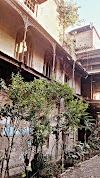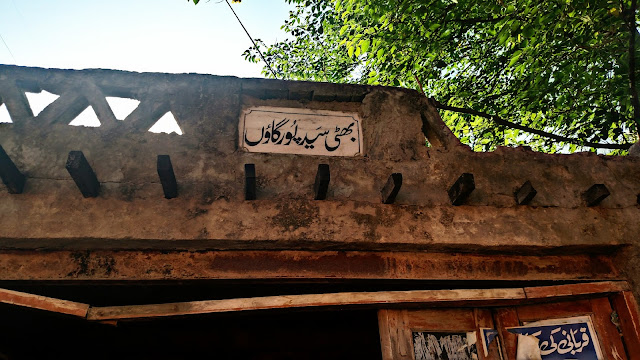Saidpur is a historic Pakistani village located in a ravine in the Margalla Hills, near Islamabad and the Daman-e-Koh overlook. The village's historic core, its abandoned Hindu temple, and its Sikh gurdwara were restored in 2006. The village now houses several high-end restaurants, and attracts Islamabad residents and tourists alike.
Saidpur is named after Sultan Said Khan, son of Sultan Sarang Khan, the Gakhar chief of the Pothohar region during the reign of the Mughal Emperor Babur.
Said Khan gifted Saidpur village to his daughter who was married to Mughal emperor Jahangir son of Mughal emperor Akbar. Jahangir's memoir, Tuzk-e-Jahangiri mentions him residing at a place “beyond Rawalpindi”, on his way to Kabul, which is believed to be Saidpur.
Saidpur was considered a garden resort and a perpetual spring provided water for drinking and for watering gardens around during the Mughal period.
The village was converted into a place of Hindu worship by a Hindu commander, Raja Man Singh. He constructed a number of small ponds: Rama kunda, Sita kunda, Lakshaman kunda, and Hanuman kunda. The region is home to many Hindu temples that have been preserved; showing the history of Hindu civilisation and architecture in the region.
In 2006, the Capital Development Authority, under the guidance of Kamran Lashari, initiated restoration of Saidpur, with the aim of both preserving heritage and encouraging tourism. Representatives of the French government provided technical assistance, while French architect Max Boisrobert visited the site on the invitation of Ambassador of France to Pakistan, H.E. Mr. Régis de Belenet.
The initial cost of the project was estimated to be around 400 million rupees.
Saidpur village, Islamabad, Pakistan.
Ab Mateen Mughal
August 28, 2018

Posted by: Ab Mateen Mughal
I am Ab Mateen Mughal From Rawalpindi, Pakistan.. I am photographer, My aim is to show the world how beautiful is my country.Popular Posts

Sujan Singh Haveli, Rawalpindi, Pakistan.
August 21, 2018

Markazi Jamia Masjid (Hanfia) Rawalpindi, Pakistan
November 25, 2018

Nuri Mansion 1936, Kartarpura, Rawalpindi, Pakistan.
September 14, 2018
Most Recent
3/recent/post-list
Random Posts
3/random/post-list





























0 Comments